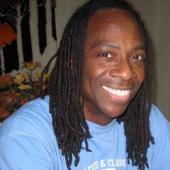Mix and match
Editorial
Let’s be honest: Many of us dream of what we would program if we had the chance to create a fully-formed (and fully-funded) theater season in the Twin Cities.
When I fantasize about my perfect theater season, I think about a company of younger, inexperienced artists interacting and creating with older, established actors, a company of diverse ethnicities with members of different backgrounds and values. Our company's mission would be to reinvent the classics of the American theater by casting actors and artists in roles that they would not have an opportunity to play in the traditional regional, Broadway, or even small or community theater circuit. Think about an elderly performer getting the chance to play Mitch in A Streetcar Named Desire or an Asian woman playing Blanche DuBois. It would infect the work with a different kind of relevance than we’ve come to expect from “classic” plays.
When I think about it, I see that I’m less interested in which specific plays we do as I am in the way in which we do them. This theater must also present new work in alternating rotation with the classical canon because writers writing today support a mission to reflect how people really live today, in all its glory. I dream of our days being filled year round with constant workshopping and reworking in a blending of the various vagaries of producing theater when the skills of professional artists and community members intersect.
We would open with an American Classic like Tennessee Williams’ A Streetcar Named Desire but, as noted earlier, with a cast of actors and artists in roles that would not seem to fit their cultural background or previous acting experience. This is not just about casting against type, but, most importantly, about risking a different interpretation that stretches our minds. The theater would be responsible for moving away from any preconceived notions of perfect casting. If we, for example, cast a novice actor whose second language is English in the role of Stanley, then we as an audience suddenly could experience the play outside of the Southern aesthetic. We will see that the play is universal. We will see how members of our community bring new interpretations to it, and we will bring new community members in to the theater if we’re brave enough to do surprising and daring things to these classic plays.
Then, for our second production, we’d mount our first new work – and, here too, we’ll stretch the way that new work is approached. Bringing in students from graduate programs, hiring locals who are learning the craft along with actors from the union will inspire transformation – and academic controversy as we mix methods – while creating a new way of approaching new work development. Again, casting community members in the company will also connect with many who may not ever think of seeing theater.
Imagine the theater putting up an established comedy next – specifically, a pop culture chestnut. It’s an under-respected area of theater that should have a forum. This wacky "low brow" work will give artists and audiences an opportunity to create and participate in a guilty pleasure. Picture The Odd Couple, for example. We’ll give it new life with a new way of casting, and we’ll explore why this kind of theater also works.
The next new work and the next challenge would be to present a cultural and social piece designed and created for the area around the theater itself. Utilizing the methods of Cornerstone Theater Company, Roadside Theater, or ❦




